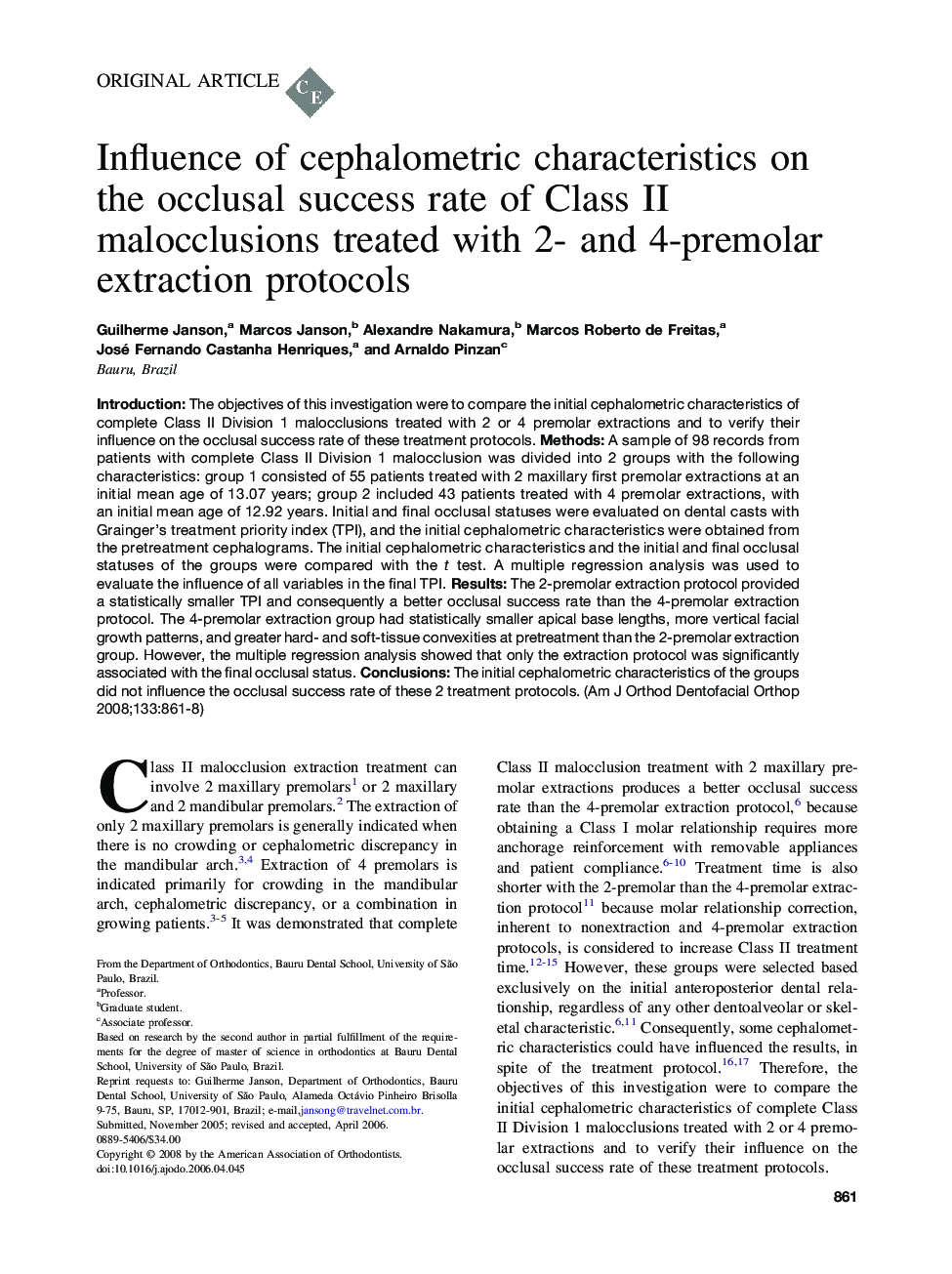| Article ID | Journal | Published Year | Pages | File Type |
|---|---|---|---|---|
| 3119096 | American Journal of Orthodontics and Dentofacial Orthopedics | 2008 | 8 Pages |
Introduction:The objectives of this investigation were to compare the initial cephalometric characteristics of complete Class II Division 1 malocclusions treated with 2 or 4 premolar extractions and to verify their influence on the occlusal success rate of these treatment protocols. Methods:A sample of 98 records from patients with complete Class II Division 1 malocclusion was divided into 2 groups with the following characteristics: group 1 consisted of 55 patients treated with 2 maxillary first premolar extractions at an initial mean age of 13.07 years; group 2 included 43 patients treated with 4 premolar extractions, with an initial mean age of 12.92 years. Initial and final occlusal statuses were evaluated on dental casts with Grainger's treatment priority index (TPI), and the initial cephalometric characteristics were obtained from the pretreatment cephalograms. The initial cephalometric characteristics and the initial and final occlusal statuses of the groups were compared with the t test. A multiple regression analysis was used to evaluate the influence of all variables in the final TPI. Results:The 2-premolar extraction protocol provided a statistically smaller TPI and consequently a better occlusal success rate than the 4-premolar extraction protocol. The 4-premolar extraction group had statistically smaller apical base lengths, more vertical facial growth patterns, and greater hard- and soft-tissue convexities at pretreatment than the 2-premolar extraction group. However, the multiple regression analysis showed that only the extraction protocol was significantly associated with the final occlusal status. Conclusions:The initial cephalometric characteristics of the groups did not influence the occlusal success rate of these 2 treatment protocols.
